Naturally Occurring Cultural Districts
What happens when cultural uses cluster and creative practitioners collaborate in the service of their neighborhoods.
We are celebrating 15 years — and counting — of stories that are deeply researched and deeply felt, that build a historical record of what the city has been.
There’s a lot of activity on the North Shore of Staten Island these days. And much of it reflects the high priority the Bloomberg administration is placing on revitalizing a downtown for the borough in St. George, the area immediately surrounding the ferry terminal. Plans include the building of the world’s tallest ferris wheel, the development of an outlet mall, the establishment of a fund to support retail development in the area, and the implementation of a sustainable cultural district to support “a balance of production, participation and exhibition.” The goals of the plan for “Art Hill” – commissioned by Staten Island Arts and prepared by a team from Hunter College – are four-fold: to provide a permanent home for the arts, to create safe and walkable connections between the ferry terminal and surrounding streets, to position “St. George as a high visibility gateway for cultural activity in Staten Island, and to ensure that culture supports local economic and community vitality.”
The envisioned “sustainable cultural district” would capitalize on and foster a community of artists and arts institutions that developed in the North Shore over the past years. Below, in the fourth and final of a series of profiles of Naturally Occurring Cultural Districts (NOCDs) around New York City, Summer Brennan traces the contours of this community and its particular opportunities and challenges, including local identity, density, and connection to a citywide cultural network. This series grows out of the NOCD working group, a collaborative effort begun by Tamara Greenfield and Caron Atlas and a diverse coalition of neighborhood-based cultural groups first introduced to UO readers in 2010. One of the primary objectives of the working group has been to articulate a community-based vision of what the city’s cultural policy should be, and to advocate for, according to Greenfield, greater “recognition of the value of cultural clusters and the value that culture plays at the community level.” That value is not isolated from broader issues facing neighborhoods, but stands to benefit local development priorities through the integration of culture producers and presenters into conversations about resilience, health, education, and transportation.
Corona, Fort Greene, Hunts Point, and now St. George, are only four of the growing number of neighborhoods whose constituents are invested in this effort. Providing portraits of these NOCDs is one way of highlighting the unique constellation of factors affecting each, as well as identifying the common challenges that can help transform the orthodoxies of top-down cultural planning evolve into locally informed, equitable, and sustainable policies. We will continue to report on the initiatives of the NOCD-NY working group as it finds new ways to argue for the role cultural production and consumption can play at the local level. But first, read about the unique urban history, present activities, and future strategies for supporting the cultural vitality of St. George. –C.S.
At first glance, Staten Island’s north shore might not seem like much of a cultural district at all. Upon leaving the gleaming new ferry building and heading southeast up sloping Bay Street towards Tompkinsville Square, there are no obvious markers that this is a gathering place for artists. No colorful murals, no bustling sidewalk cafés, no galleries or music venues. No hipsters. Instead, it has the look of so many parts of the city on gentrification’s overgrown margins that have yet to become hip, still carrying an aura of the benign neglect of decades past.
A new brick apartment building, advertising available units on large banners, sits next to an empty lot where tall weeds poke through the bars of a padlocked gate. In a small row of shops that includes a check-cashing place and a pizza restaurant, two of the storefronts are vacant. Just up the hill, leafy, winding, residential streets with the kind of detached houses that are rare in New York City’s more populous boroughs seem poised to draw the artistically minded who are looking to spread out.
Sleepy St. George is a neighborhood on the verge of something big. Along the water, between the ferry terminal and the minor league ballpark, construction is underway for a large plaza of shops and restaurants that will surely transform the area. And behind St. George’s somewhat shaggy exterior is a determined community of artists that has been gaining strength over the years, and may be about to get a big push from the City to put their neighborhood on the cultural map.
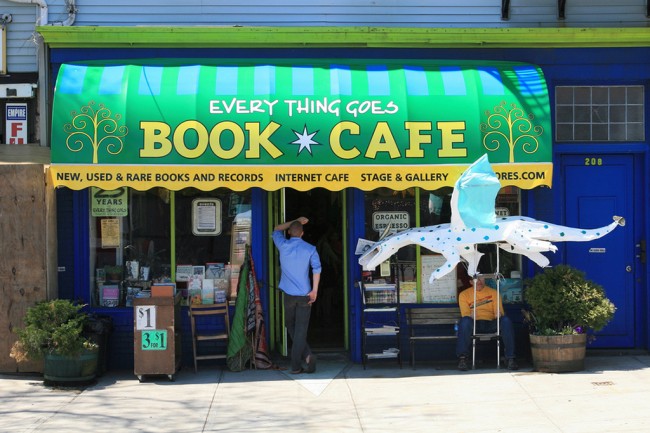
Photo by Dave Cook/Eating In Translation
To shine a light on this process of moving from a nice place to make art to a fully fledged arts destination, I spoke with local artists, administrators, and city planners about the area’s history, designs for a planned “sustainable cultural district” dubbed Art Hill, and other changes that will inevitably come with the new waterfront construction.
One thing I learned while speaking to Staten Island’s artists is that the community is interested in its own mythology, in finding a kind of origin story for what it considers its legacy of alternative thinkers and colorful revolutionaries. For most, that starting point is the exiled Mexican president General Antonio López de Santa Anna.
Beginning in the middle of 1866, the old General – already deep in his own labyrinth of plots to regain power in his native land – could be seen limping daily up Broadway from the Staten Island Ferry, his corkwood leg clacking on the cobblestones. The self-proclaimed “Napoleon of the West” had been lured to New York from his exile in the Caribbean by a pair of con men claiming the American government would support his re-ascension. When they disappeared, cash in hand, the general shrugged and moved from his overpriced house in New Jersey to Staten Island, for the same reasons that still serve as a draw today: it was quiet, and the rents were cheaper.
He published a manifesto. He gambled. He wrote imploring missives to diplomats and would-be supporters. And like many strapped-for-cash New Yorkers, the general had a roommate: the struggling photographer Thomas Adams who, inspired by the general’s fondness for chicle, would go on to invent chewing gum. It’s a popular story to invoke about the borough – which would not become a part of New York City until 1898 – and helps to bolster the claims of Staten Island’s creative residents that it’s removed character has made it a haven for alternative thinkers of all sorts.
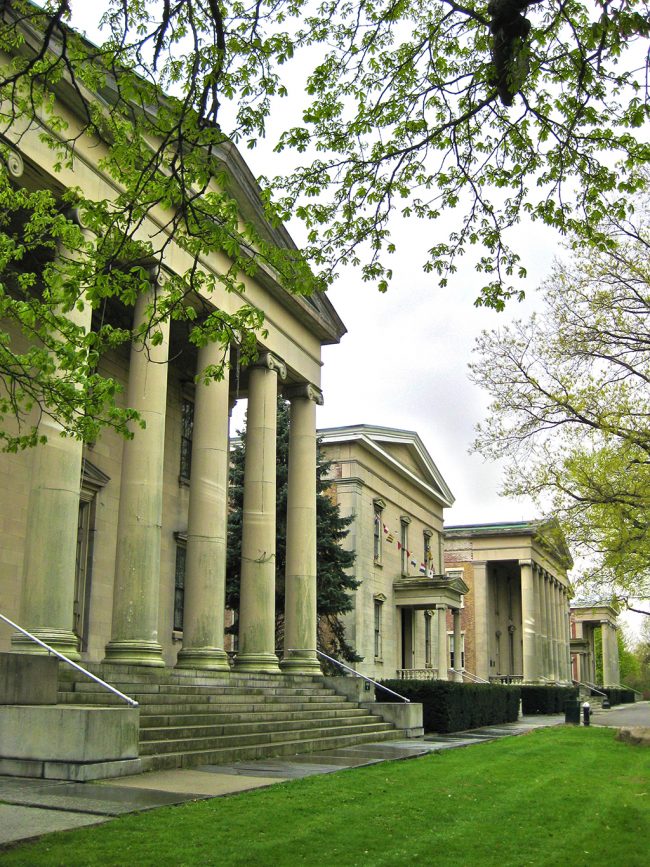
The landmarked “Front Five” buildings at Snug Harbor | Courtesy of the Snug Harbor Cultural Center & Botanical Garden
A driving force in the ascension of St. George as a cultural district – and a key player in the plans to formalize it – is Staten Island Arts, formerly called the Council on the Arts and Humanities for Staten Island (COAHSI). If you follow Richmond Terrace west along the north edge of the island a few miles, you’ll encounter Snug Harbor, a collection of 28 architecturally significant 19th century buildings on 83 lush acres, where Staten Island Arts has its office. Built in 1801 as a haven for aging or ailing sailors, the campus — known as the Snug Harbor Cultural Center and Botanical Garden – is now a park that is home to the Staten Island Children’s Museum, the Staten Island Museum & Archives, the New York Chinese Scholars Garden, the Music Hall, and a variety of other arts organizations and programs including Art Lab and the Snug Harbor Artist Residency Program (SHARP).
Art Lab, a grassroots non-profit founded in 1975, offers courses in fine and applied arts to the Staten Island community, as well as exhibition space in an on-site gallery. SHARP provides studio space and living accommodations for artists. On a recent afternoon, a young female artist in cut-off shorts could be seen priming a large canvas on the porch of one of the program’s five nineteenth-century cottages.
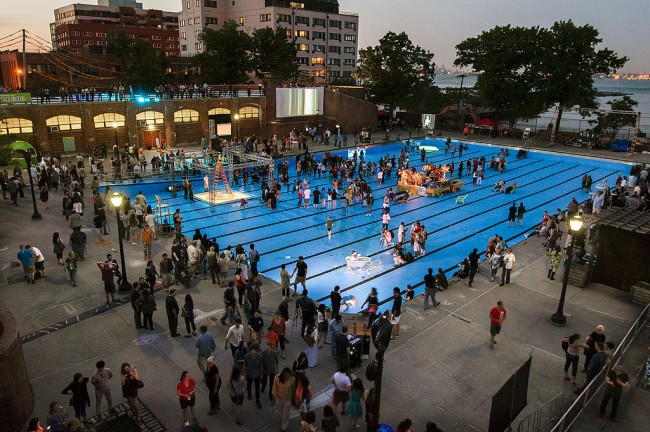
Lyons Pool during Lumen 2013, a video and performance art festival organized by Staten Island Arts | Photo Courtesy of Glen DiCrocco and Staten Island Arts
Swedish artist Agnes Thor completed her two-month residency with SHARP last fall, and exhibited her work in the gallery at the Newhouse Center for Contemporary Art, also in Snug Harbor. The show, called La Mort La Vie: subjective investigations of life and death was on display between January and March 2013. Her work consists largely of evocative, washed-out photographs, often of women in nature.
“It was amazing,” Ms. Thor said of her residency. “I had been to Staten Island before – it has a special history – but it was such a great experience to do work there and have the focused time.”
She said the two months spent in the historic cottage, which she shared with another artist, allowed her to work and also mount her first show in New York.
“I also got to know Staten Island and ended up moving out there after the residency,” she said. “So I guess I’m part of the scene there now.”
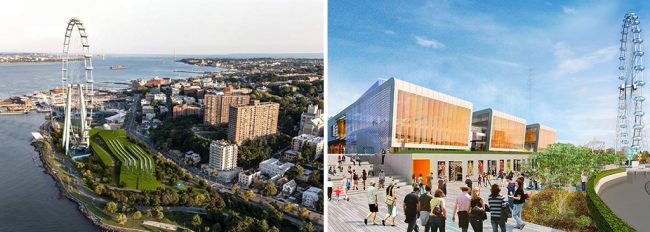
St. George Waterfront Redevelopment Project | Images courtesy of the New York City Economic Development Corporation (NYCEDC)
Staten Island Arts has ambitious plans to increase the dialogue between artists inside and outside the borough, and with the public. Executive Director Melanie Franklin Cohn said that the waterfront revitalization project, known as the Harbor Commons, would present the perfect opportunity to take advantage of the captive audience of tourists coming to Staten Island and to get them involved in local art.
According to Cohn, “The Staten Island Ferry is the third most popular tourist attraction in New York City. An art program at the Harbor Commons that included site-specific, cutting-edge artwork will give visitors an additional reason to make the trip, and to hang out for longer than usual.”
This additional reason, she said, would help infuse the necessary interest – and capital – into arts in the area. As it stands, the very thing that could serve as the biggest boon to a thriving cultural dialogue – the ferry terminal and its 65,000 daily passengers – is also its largest obstacle.
Built to manage a high volume of car traffic for commuters and necessary parking, the terminal operates as a barrier to pedestrians seeking to access the neighborhood of St. George. Not only are the exit points to the street confusing, but once outside the terminal it is not easy to see or reach St. George’s more desirable attractions. Furthermore, studies have shown that pedestrians expressed a perception of danger around the ferry building, as they felt isolated and confused about where to go once leaving the impressive new construction. Arts organizers like Ms. Cohn agree that this liability would need to be remedied in order to get the necessary flow of traffic.
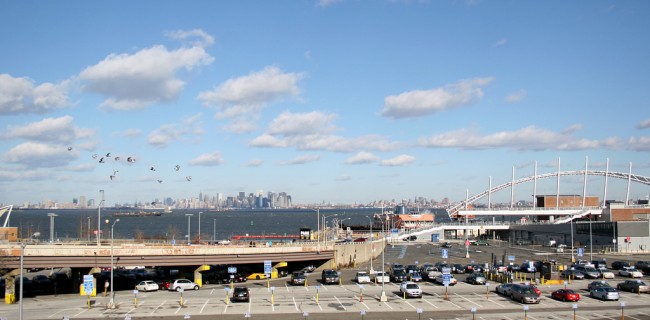
View of the ferry terminal from Richmond Terrance | Photo via Christine Kaelin
But even without the benefit of thousands of daily tourists, artists outside of Snug Harbor have found other ways to forge connections and support each other’s work.
Deep Tanks, a convertible studio space that supports gallery exhibits, music shows and other events, is one such hub, two blocks from the ferry terminal. The brainchild of artist couple Kris Johnson and Florence Poulain, this former newspaper office (of The Islander in the 1920s and ’30s) has been supporting public work for the past three years. They take part in Second Saturdays Staten Island, a monthly art walk of gallery openings, open artist studios, and other public cultural events along the island’s North Shore. And over the past three years, Deep Tanks’ public programming, from butoh performances to poetry readings, has reflected Johnson and Poulain’s determination not to perpetuate the “old man’s club” dynamic that they observed in the Staten Island art scene, the closed-mindedness about a younger generation of cultural practitioners. “We’ll have a guy playing accordion, and a local band who are 19 or 20 years old. You didn’t use to see this on the island. We’ve managed to attract people from the age of 18 to their 80s.”
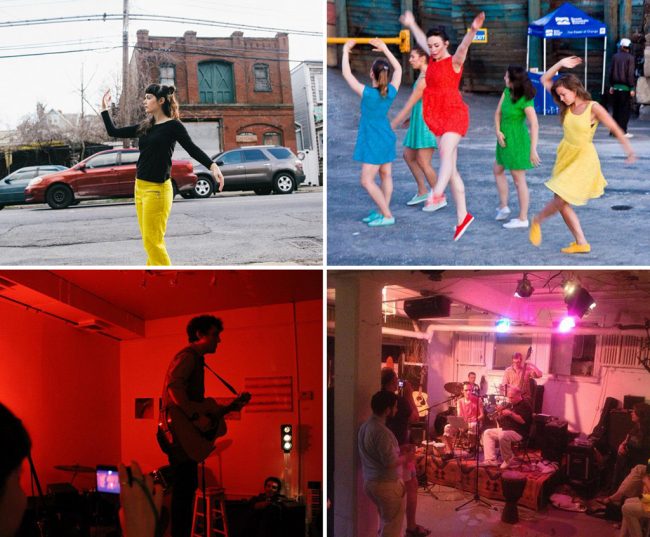
Courtesy of Second Saturdays
“People from Manhattan are saying that Staten Island is the new place for art,” Johnson said. “But I think it has always been a creative community.”
Will Staten Island’s St. George become the new Williamsburg? Johnson doesn’t think so. Staten Island continues to struggle with an inferiority complex, in his opinion. Artists that live and create in the borough seem to feel they need to show their work someplace else for it to be validated, or for their shows on the island to draw crowds from Manhattan or Brooklyn.
“It’s like it’s somehow not enough to just show to Staten Islanders. But I don’t believe in that philosophy,” he said. “Deep Tanks is for Staten Islanders.”
Still, it seems that traffic from the rest of the city will be what makes or breaks St. George as a sustainable artistic destination — a place to experience art and cultural vitality, and where local artists find opportunities for collaboration, recognition, and exhibition — rather than just a nice and affordable place to live.
Susan Grabel, a long-time Staten Island resident, has been making and exhibiting figurative sculpture for over 35 years. She describes her work as focusing “on the human dimensions of social and political issues like consumerism, homelessness, alienation, and aging women’s bodies” and says there has always been a supportive, if small, arts community there.
“COAHSI had a big impact,” she said of the organization since renamed Staten Island Arts. “The scene has waxed and waned, but now it really seems that the art movement is on the rise.”
St. George’s mostly informal gallery scene has been created by artists acquiring permits to use vacant spaces as galleries, she said. But, she’s on board, and has lent her help to Staten Island Arts’ attempts to create a more official arts district on the North Shore.
“With the planned move of [Staten Island Arts offices] to the new ferry terminal, this should lend more visibility,” Grabel said.
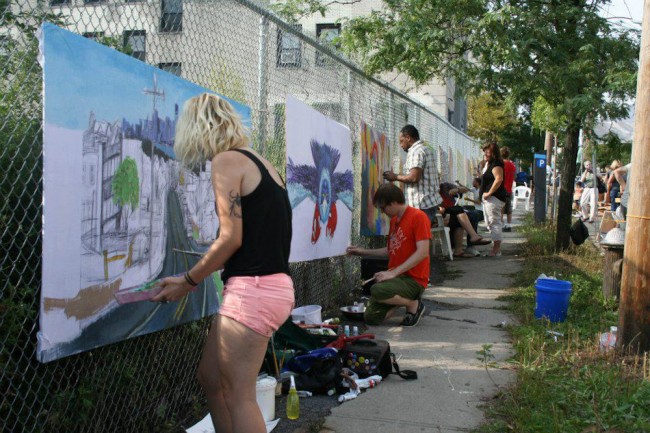
Deep Tanks Arts Festival | Photo courtesy of Deep Tanks
The St. George Sustainable Cultural District Plan, commissioned by Staten Island Arts in 2010, hopes to capitalize on the transformative energy of the artists and their changing neighborhood by giving them a permanent home in a place that can sustain the cultural community into the future. According to the plan, St. George would become an arts destination known as Art Hill.
“It’s a more suburban culture,” Ms. Grabel said of the area as it stands now. “People are always in their cars.” This challenge interferes with getting enough of a concentration to make a true arts community blossom. “We don’t get that much foot traffic.”
“It’s a question of density,” she said. “If people can hang on long enough to get the concept of a destination going; if they do an outlet mall and the Wheel, then that’s a possibility. There are some new buildings going up … there is going to be a food market down there. More density. We have to get the density.”
“Things are at a fuller point now,” she said. “We are getting more young people coming in, because Staten Island is still affordable, and other places aren’t. I think it can happen, it has all of the starting elements.”
The views expressed here are those of the authors only and do not reflect the position of The Architectural League of New York.
What happens when cultural uses cluster and creative practitioners collaborate in the service of their neighborhoods.

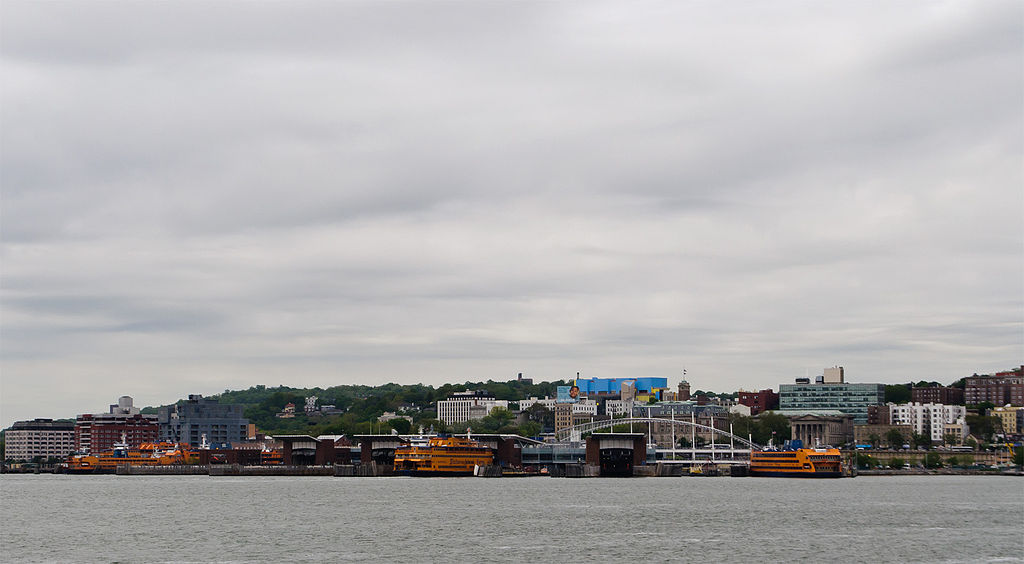
Comments